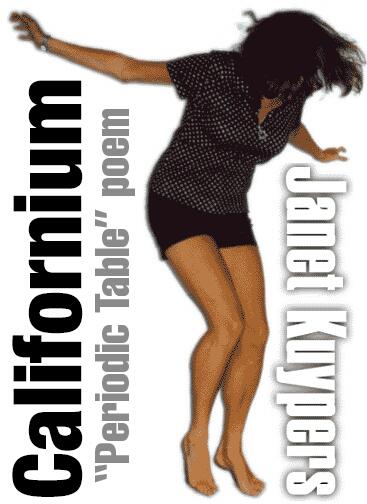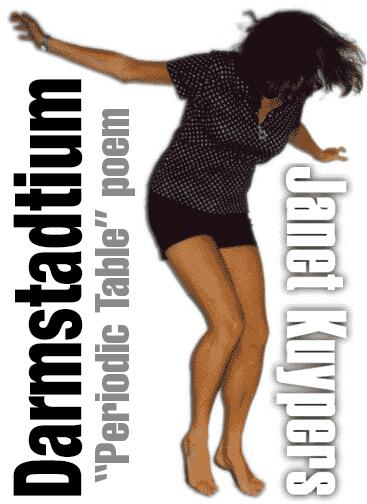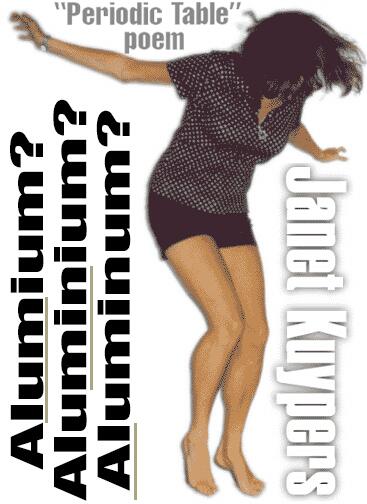Californium
Janet Kuypers

from the “Periodic Table of Poetry” series (#98, Cf)
reflecting on the poem “i am the woman who loves pain”
10/23/13
They tell me that I am settling.
They tell me this is not love.
I keep telling myself
there’s nothing natural about you,
but when I try to take you in,
it seems you work your way
deep into my bones
and I just can’t get rid of you.
It’s like I just can’t get
of the idea of you
out of my head.
But you try to tear me apart
if you ever actually stay with me.
So when it comes to you,
I seem to be
the woman who loves pain.
Because I know you’ll do
the same things,
act the same way.
I’ve gotten used to it.
I look for you,
and whenever I find you…
Everything tarnishes
when we’re together,
but… I don’t know any better.
I don’t know how to stay away.
They keep telling me
that this is not love.
But I’ve never felt love,
and although I am hurting with you,
it’s better than hurting alone.
And you always leave
before I get the chance
to feel attached,
you think,
so you turn away
and you belive
you leave scott-free.
So, okay.
If that is what you do,
then… Don’t worry.
Despite what you do,
despite how you always
seem to react so much
when you’re with me,
I’ll still go across the country for you
I don’t know how many times.
I see your lights,
I see your glow,
because you still
intrigue me so.
I can’t help it.
I don’t know any better.
I must love this pain.
I keep coming back for more.




